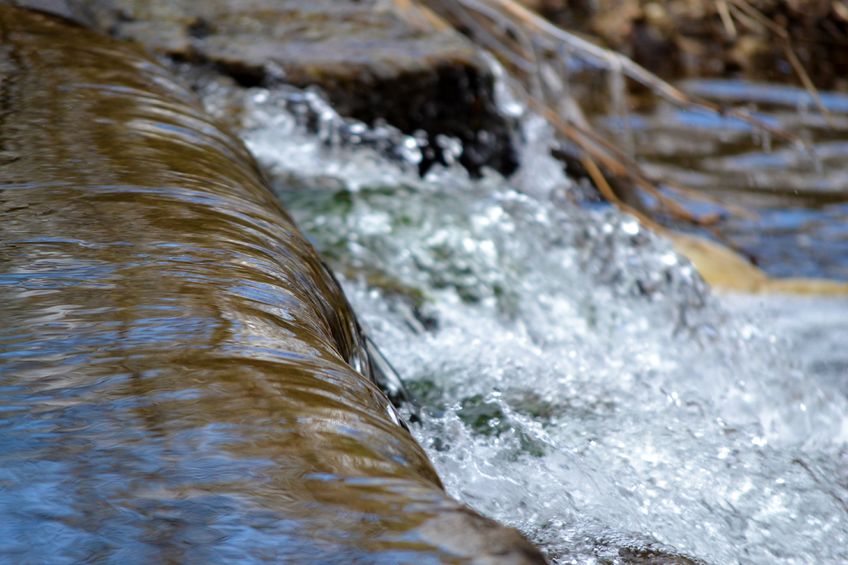Navigating the urban waters: Innovative approaches to stormwater management
 In the hustle and bustle of urban life, stormwater management might not be at the forefront of our minds, but it plays a crucial role in maintaining the health and sustainability of our cities. As urbanization continues to rise, so does the impact of stormwater runoff on the environment. Traditional methods may no longer suffice, prompting the need for innovative approaches to stormwater management in urban environments. In this blog, we’ll explore some groundbreaking techniques that redefine how we handle stormwater and ultimately contribute to more resilient, eco-friendly cities.
In the hustle and bustle of urban life, stormwater management might not be at the forefront of our minds, but it plays a crucial role in maintaining the health and sustainability of our cities. As urbanization continues to rise, so does the impact of stormwater runoff on the environment. Traditional methods may no longer suffice, prompting the need for innovative approaches to stormwater management in urban environments. In this blog, we’ll explore some groundbreaking techniques that redefine how we handle stormwater and ultimately contribute to more resilient, eco-friendly cities.
1. Green roofs: A breath of fresh air above
One of the most visually striking and environmentally friendly solutions is the implementation of green roofs. Transforming rooftops into living, breathing ecosystems, green roofs absorb rainwater, reduce runoff, and provide insulation to buildings. The vegetation on these roofs captures pollutants and releases oxygen, creating a miniature oasis amidst the concrete jungle. Cities like Chicago and Toronto have embraced green roofs as a sustainable stormwater management strategy, setting a precedent for urban areas around the world.
2. Permeable pavements: Paving the way for water absorption
Traditional asphalt and concrete pavements contribute significantly to stormwater runoff, leading to flooding and water pollution. Permeable pavements offer a solution by allowing water to pass through the surface, reducing runoff, and recharging groundwater. These pavements come in various forms, including permeable concrete, porous asphalt, and permeable pavers. By incorporating permeable pavements into urban design, cities can mitigate the adverse effects of stormwater while maintaining functional and aesthetically pleasing spaces.
3. Rain gardens: Nature’s filtration system
Rain gardens serve as beautiful and functional elements in urban stormwater management. These gardens are strategically designed to capture and filter runoff, allowing water to percolate into the ground. Native plants with deep root systems are chosen for their ability to absorb and cleanse water, reducing the pollutants that would otherwise flow into storm drains. Integrating rain gardens into urban landscapes not only enhances the visual appeal of the surroundings but also contributes to a more sustainable and resilient environment.
4. Stormwater harvesting: Turning raindrops into resources
Why let precious rainwater go to waste when it can be harvested and repurposed? Stormwater harvesting involves collecting and storing rainwater for later use. This harvested water can be utilized for irrigation, landscape maintenance, or even as a source of non-potable water for buildings. Implementing stormwater harvesting systems not only reduces demand on traditional water sources but also helps alleviate the strain on stormwater infrastructure.
5. Underground detention systems: Hiding solutions beneath the surface
In densely populated urban areas where space is limited, underground detention systems provide an effective solution. These systems store excess stormwater underground, releasing it gradually to prevent overwhelming drainage systems during heavy rainfall. By going beneath the surface, these systems optimize land use while effectively managing stormwater runoff.
6. Smart technology: The digital frontier of stormwater management
Advancements in technology have paved the way for smart stormwater management systems. These systems use sensors, real-time data, and predictive analytics to monitor and control stormwater infrastructure. By optimizing the efficiency of drainage systems, smart technology reduces the risk of flooding and allows for more proactive and responsive stormwater management.
7. Community engagement: The human element in stormwater solutions
No stormwater management strategy is complete without community involvement. Educating residents about the impact of stormwater runoff and involving them in sustainable practices can lead to more effective solutions. Community engagement initiatives can include educational programs, workshops, and collaborative efforts to implement small-scale stormwater management solutions at the neighborhood level.
8. Urban forests: Nature’s triple threat
Integrating urban forests into city planning is a multifaceted approach to stormwater management. Trees not only provide shade, reduce the urban heat island effect, and improve air quality but also play a crucial role in stormwater absorption. Their extensive root systems help stabilize soil, preventing erosion, while their canopies intercept rainfall, reducing the impact of droplets hitting the ground. Urban forests, strategically planted throughout the city, act as a natural barrier against stormwater runoff, promoting water infiltration and supporting overall ecological balance. Cities like Seattle and Portland have successfully implemented urban forestry programs, showcasing the positive impact on stormwater management and community well-being.
9. Floating wetlands: A waterborne symphony of sustainability
In cities with bodies of water, floating wetlands emerge as an innovative and visually appealing solution to stormwater management. These artificial islands, often constructed with buoyant materials and planted with native vegetation, mimic natural wetlands’ water purification processes. As stormwater passes through these floating wetlands, plants absorb pollutants, and the root systems provide habitat for aquatic life. Not only do floating wetlands enhance water quality, but they also serve as aesthetically pleasing additions to urban waterfronts. Cities like Rotterdam and Baltimore have experimented with floating wetlands to harmonize urban development with water-based ecosystems, showcasing the potential for sustainable stormwater solutions.
In the pursuit of creating innovative, sustainable urban environments, collaboration between communities and engineering experts is paramount. McNeil Engineering, a leading force in civil engineering and stormwater management, stands ready to contribute expertise and innovation to your urban development projects. Visit McNeil Engineering to explore how their comprehensive services can help transform urban spaces, making them more resilient, eco-friendly, and capable of managing stormwater challenges effectively.
As we continue to navigate the urban waters, let us embrace these innovative stormwater management approaches. By incorporating solutions like green roofs, permeable pavements, rain gardens, stormwater harvesting, and community engagement into our urban planning, we can build cities that not only withstand the storms but also thrive in harmony with nature. Together, with the expertise of engineering partners like McNeil Engineering, we can create a future where stormwater is not a problem to be managed but a valuable resource to be harnessed for the greater good of our urban landscapes.

